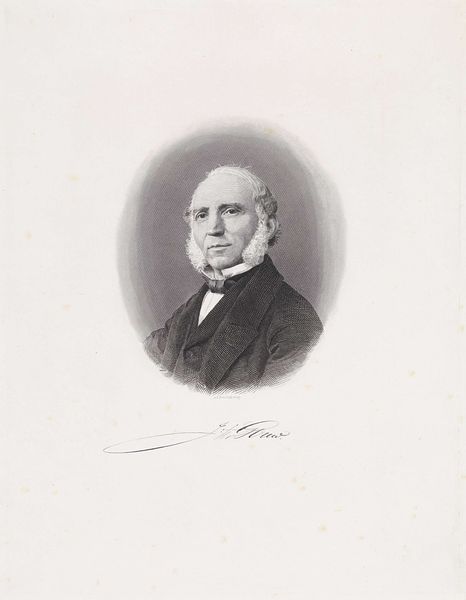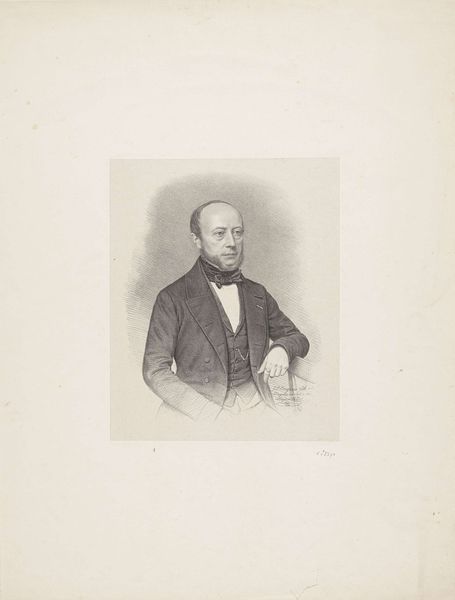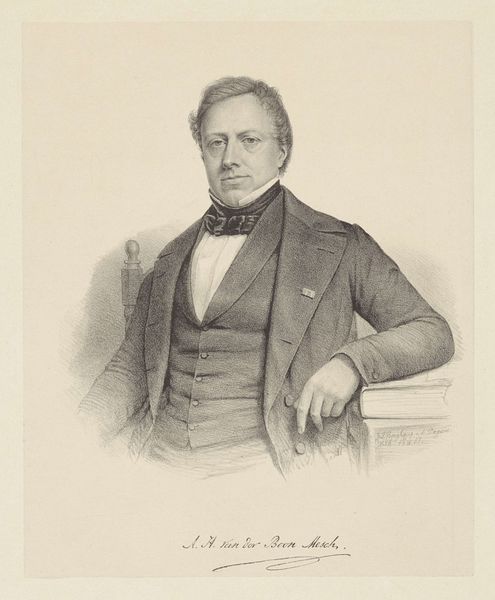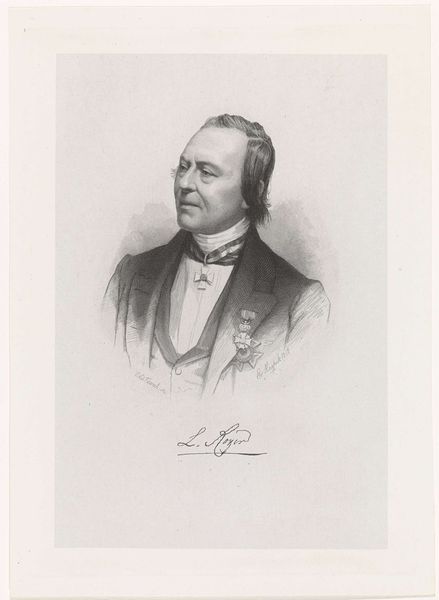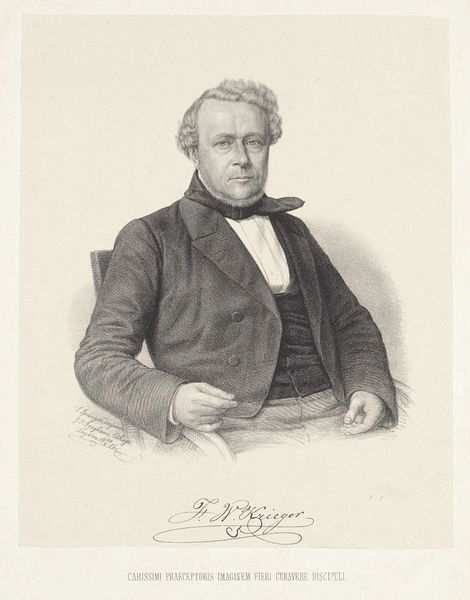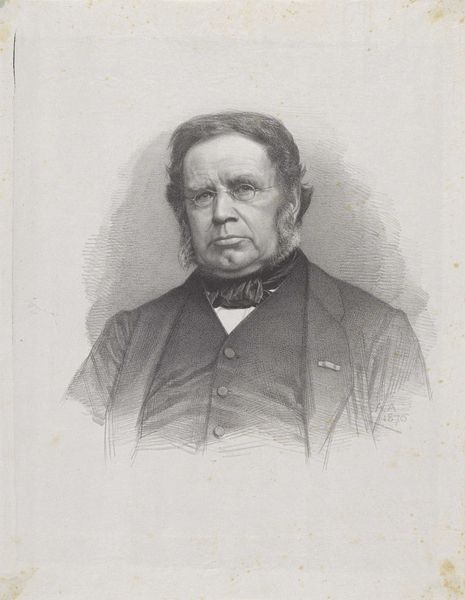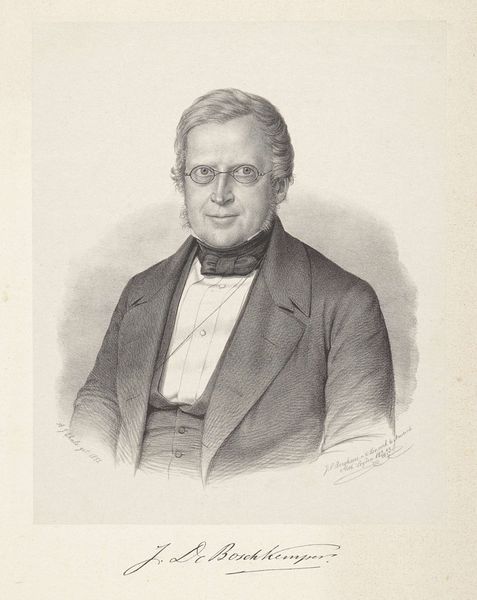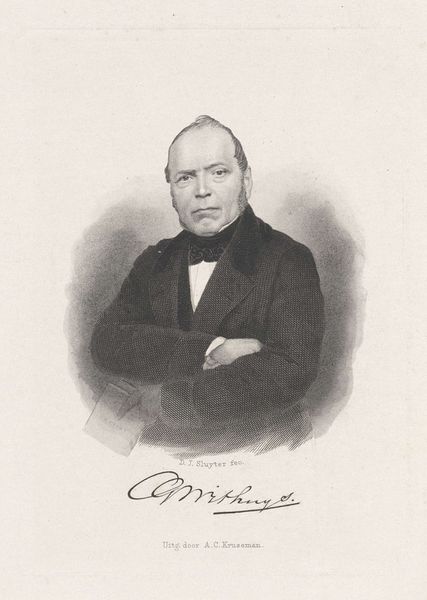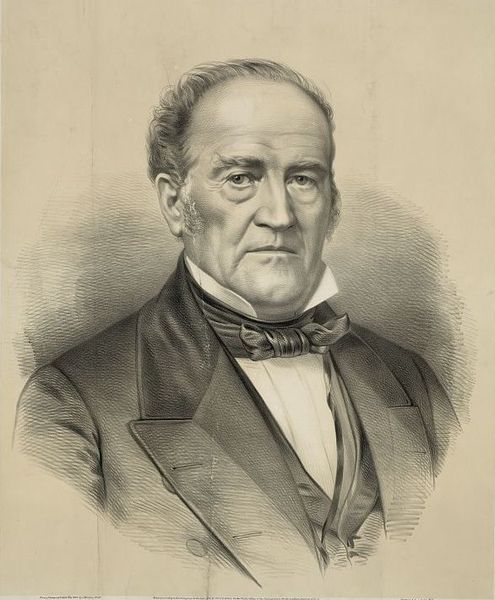
drawing, print, graphite
#
portrait
#
drawing
#
16_19th-century
# print
#
graphite
#
realism
Dimensions: height 193 mm, width 161 mm
Copyright: Rijks Museum: Open Domain
Curator: Here we have "Portrait of an Unknown Man," possibly created in 1856 by Johann Peter Berghaus. It’s currently held here at the Rijksmuseum. It appears to be a graphite drawing, perhaps a preparatory study for a print. What strikes you immediately? Editor: There's a certain severity in his gaze, wouldn’t you agree? The artist has meticulously rendered every line of his face, creating an image that is incredibly detailed and perhaps even a little unflattering. Look at the almost palpable texture of the clothing! The shading around the bow-tie, for example. Curator: Absolutely. That intensity you see reflects the growing middle class asserting its identity and values during the 19th century. Portraiture became a way to document status and project an image of respectability and seriousness. The detailed rendering emphasized a certain truthfulness, aligned with the era's increasing focus on empirical observation. Editor: It’s curious, though. While the realism is evident, there's also an interesting play of light and shadow. The composition guides your eye directly to his face. The contrast is masterful, drawing out that somber expression. Do you feel that the light is too uniform, that perhaps a light source more skewed towards stage theatrics would inject drama and heighten the symbolism? Curator: Berghaus probably aimed to avoid overt drama, in line with the social conventions. This wasn’t about flamboyant aristocracy; it was about portraying solid, reliable citizens. The uniform lighting serves to present the subject matter-of-factly, highlighting what they wanted to present to society at the time: their respectability. And in a society striving towards objectivity, overt drama becomes associated with a certain type of class-based identity to which our protagonist would likely not want to be associated. Editor: So, this piece becomes an interesting historical snapshot. Looking beyond just technique, we gain valuable information concerning its subject and what it sought to project to others around it. It brings into the light that there are more forces involved in constructing a picture than purely those of visual and compositional forces. Curator: Indeed. Art serves not only as a mirror reflecting society, but as an artifact shaped by it, consciously projecting that image back in a carefully orchestrated visual interplay.
Comments
No comments
Be the first to comment and join the conversation on the ultimate creative platform.

